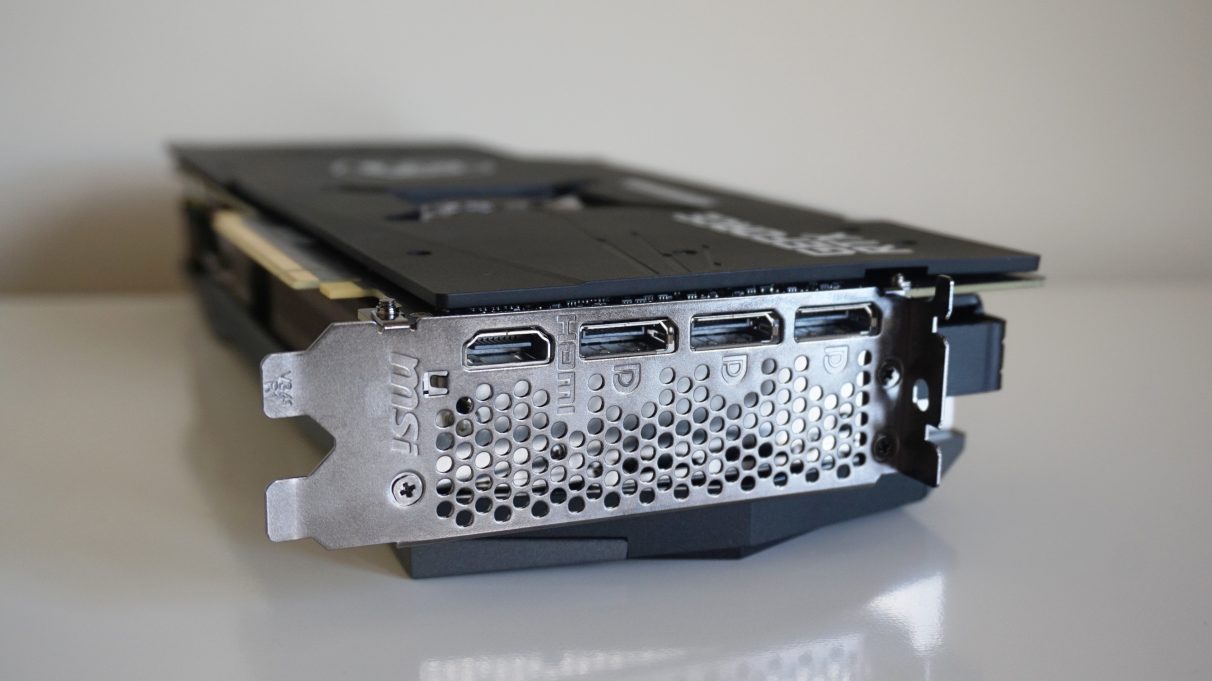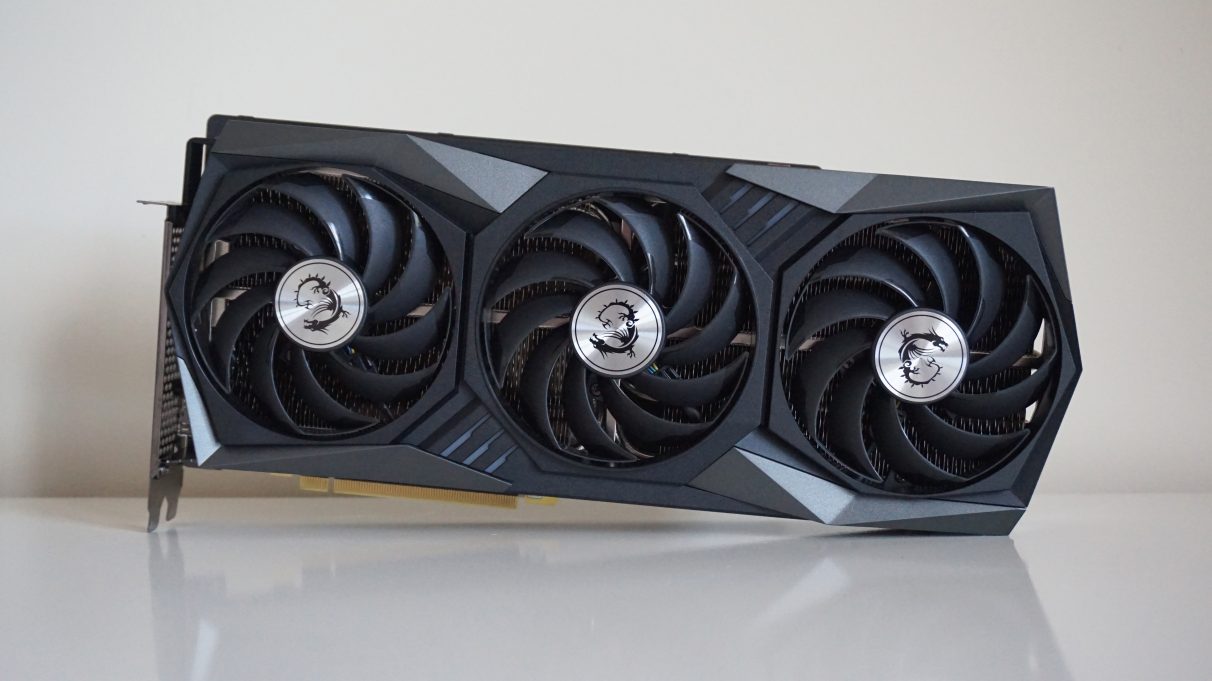Instead, you should only really consider the RTX 3090 if you’re a professional media type who needs their graphics card to do more than just play games, as the actual benefit you’re getting over the RTX 3080 when it comes to gaming is surprisingly small. It’s certainly not enough to warrant the eye-watering jump in price right now - and that’s if you can find one that’s even on sale right now, as Nvidia’s ongoing stock shortages for both the RTX 3090 and RTX 3080 don’t show any signs of abating. Even when the RTX 3090 does come back in stock, though, it’s not even a good buy for those looking to future proof their PC for many years to come, either. As we discovered last month, the number of 8K monitors you can buy right now can be counted on a single hand, and even 8K TVs are still few and far between. The cheapest models start at around £3000 / $3000, but not even the most ardent of TV tech fanatics would recommend you buy one right now. Not only are they insanely expensive, but there’s also nothing that actually supports 8K at the moment - and if you remember how slowly everything was to adopt 4K resolutions (I can, and it was several years between the first 4K TVs going on sale and there actually being 4K content to watch), you can bet we’ll be looking at a similar time frame for 8K stuff, too. By the time 8K is actually a thing, the RTX 3090 will be old news, succeeded and replaced by who knows how many other generations of newer, faster (and probably cheaper) graphics cards. Sure, the RTX 3090 is a much better graphics card than the RTX 2080 Ti ever was for a similar amount of money right now, but there is absolutely no need to buy one at all when the RTX 3080 exists. To test the RTX 3090, I managed to get to hold of MSI’s GeForce RTX 3090 Gaming X Trio edition. Like their Gaming X Trio variant of the RTX 3080 I tested recently, this is an enormous graphics card that measures a monstrous 323x140x56mm and weighs 1.5kg, making it very long and very heavy compared to other models out there. As I discussed in my MSI GeForce RTX 3080 Gaming X Trio review, this means it may not necessarily fit in your current PC case, as I had to remove some of my remaining HDD bays (and rearrange some SATA ports) before I could get it working. Its huge bulk has also prompted MSI to include a support bracket in the box, too, so it doesn’t end up bending or damaging your motherboard. It’s a thoughtful and practical addition, but it does also take up a heck of a lot of room, and may also prevent you from having additional PCIe cards installed at the same time. Fortunately, the only extra card I needed to worry about was my Wi-Fi card, which I could scoot down to the bottom of my motherboard, but this may not be the case for everyone. Once again, I’d strongly recommend checking your case’s dimensions and current layout before you decide to get one. If all that wasn’t enough, you’ll also have to make sure you’ve got an appropriate power supply to run it, too. Nvidia recommend at least a 750W PSU for the RTX 3090, but MSI’s Gaming X Trio edition throws in the extra wrinkle of requiring three 8-pin power connectors as well. This shouldn’t be a problem if you’re a sensible person who keeps all their spare PC parts in easy-to-remember locations, but I ended up having to install a completely new power supply in my PC for this and MSI’s RTX 3080 Gaming X Trio because the second power cable for my usual modular OCZ ZX850W PSU has since been lost to the cupboards of time (and the spare one I tried to scrounge from the power supply I did end up using simply wouldn’t let me PC power on). Not all RTX 3090 cards require three 8-pin connectors, I should note, but for the love of all that’s holy, please do bear this in mind and check your PSU beforehand if you’re absolutely determined to go ahead with your purchase.
MSI GeForce RTX 3090 Gaming X Trio 4K benchmarks
Honestly, though, I’m not sure why you’d bother. Yes, the RTX 3090 can hit 60fps+ in almost all of today’s biggest blockbusters at 4K (and often well in excess of 100fps at 2560x1440), but with a test setup like mine, at best you’re only looking at a boost of around 10fps over the RTX 3080, and at worst a boost of around 5-6fps. When you consider the average RTX 3080 costs around £700 these days, that’s basically the equivalent of an extra £100-200 per frame.
In Shadow Of The Tomb Raider, for example, the RTX 3090 managed an average of 66fps on its Highest quality setting at 4K with its top SMAA x4 anti-aliasing effect enabled, up a whopping 8fps from the RTX 3080’s result of 58fps. Similarly, if you want to enjoy the game’s ray traced shadows on the top settings, you’re still probably going to have to enable DLSS to get the best frame rates. While dropping the game’s anti-aliasing to its lowest SMAA setting produced an admirable 61fps average with Ultra-fied ray tracing enabled (up from the RTX 3080’s 51fps average), its frequent dips to 45fps were enough to make it feel just a bit too juddery to make it worthwhile. Instead, switching to DLSS gave me a lovely smooth average of 111fps, although I couldn’t for the life of me tell the difference between that and the RTX 3080’s DLSS score of 99fps.
The same thing happened in Metro Exodus as well. The RTX 3080 is already capable of hitting an average of 68fps at 4K Ultra in its tough, dedicated benchmarking tool without ray tracing enabled, and raising that to 79fps with the RTX 3090 felt equally smooth to me. Similarly, the RTX 3090 only added an average of 7fps to the 3080’s Ultra-fied ray tracing result as well, averaging 49fps instead of 42fps. As with Tomb Raider, you’re going to have to enable DLSS if you want to maintain a smooth, 60fps frame rate on the top settings here, but I’ll be damned if I can distinguish an average of 71fps on the RTX 3090 with DLSS enabled from the RTX 3080’s average of 67fps.
The RTX 3090 wasn’t really any more adept at handling all the extra Nvidia settings in Final Fantasy XV, either. While it’s nice to finally encounter a card that can handle the game’s TurfEffects and Hairworks settings on Highest at 4K without dropping below 60fps (averaging 69fps versus the RTX 3080’s 59fps), adding its tough VXAO and Shadowlibs effects in the mix still drags the RTX 3090 below that all-important target. Sure, an average of 58fps is still miles better than 47fps in this respect, but when I still saw a couple of lows below 50fps during heated battles, I’d imagine that most people will be reaching for that DLSS setting again - just like you would with the RTX 3080.
The RTX 3090 wasn’t able to march across the 60fps line in Total War: Three Kingdoms at 4K Ultra settings, either, averaging just 55fps in its battle benchmark. Again, this is definitely more playable than the RTX 3080’s average of 47fps on the same quality setting, but in both cases you’re still probably going to have to play on High to get the smoothest experience, negating all that extra money you’re spending on this supposedly more powerful card.
Assassin’s Creed Odyssey saw an even smaller gap emerge between the two RTX cards. Whereas the 3080 managed an average of 62fps on Ultra High at 4K, the 3090 only bumped this up to a pretty disappointing 66fps. Likewise, I wasn’t able to tell the difference between the RTX 3080’s average of 58fps in Monster Hunter: World on Highest at 4K, and the RTX 3090’s 66fps. Sure, I didn’t quite feel the need to turn on DLSS in this particular case, but it’s still not really what you’d expect for another £1000 / $1000-odd, is it?
Even Forza Horizon 4 felt equally smooth on both cards, the RTX 3090 just about inching ahead with an average of 145fps on Ultra at 4K compared to the RTX 3080’s result of 139fps. Indeed, the only game where I actually saw a jump of more than 10fps was The Witcher III. While the RTX 3080 managed an average of 83fps on Ultra at 4K, the RTX 3090 bumped this up to 101fps. Finally! A single game where you might actually be able to tell the difference if you’ve got a high refresh rate monitor at your disposal. What an incredible investment.
Yes, maybe there’s a case to be made that my Intel Core i5-10600K might be holding it back a bit at these top settings, but trust me, I’ve tested both the Core i5-10600K and Core i9-10900K at 4K, and there is naff all difference. At this resolution, you’re still GPU bound with the RTX 3090, and throwing more CPU cores at the situation isn’t going to change things.
Needless to say, if the difference between the RTX 3090 and 3080 is this small at 4K, there’s even less benefit when you drop the resolution down to 2560x1440. Again, the RTX 3080 was already more than capable of producing super smooth frame rates at this resolution, hitting between 90-100fps in most of the games I’ve just mentioned, and adding another 10fps with the RTX 3090 isn’t going to change much.
As a result, anyone looking to buy a highly capable graphics card for 4K gaming right now should really stick with the RTX 3080 out of Nvidia’s current RTX 30 crop, as the RTX 3090’s mega specs just simply don’t translate to equally mega performance. It’s a bit of a moot point at the moment, of course, since no one can even buy these damn cards right now, but the numbers speak for themselves. As a gaming GPU, the RTX 3090 is a complete waste of everyone’s time and money compared to the RTX 3080. Then again, even if you could buy an RTX 3080 right now, I’d still urge patience. After all, we’re just a couple of days away from seeing what AMD have got up their sleeve with their Big Navi GPU reveal, and we’ve also got the RTX 3070 to come this week as well. The former are being revealed on Wednesday 28th October at 2pm ET / 5pm GMT, and the latter, which is touted as delivering RTX 2080 Ti performance from just £469 / $499, goes on sale Thursday 29th October. I’ll be covering AMD’s launch live as it happens, where we’ll hopefully find out just how much their next-gen ray tracing GPUs are going to cost compared to Nvidia’s RTX 30-series, and when they’re going to be coming out. As a result, it would be madness to buy anything before we know what’s going with Big Navi, although I reckon the real competition isn’t going to be around AMD’s RTX 3080 competitor - it’s going to be their RTX 3070 rival. And I’ll be able to tell you exactly what kind of battle that’s going to be in just a couple of days time. In short, don’t bother scouting out an RTX 3090. Heck, I wouldn’t even bother trying to get an RTX 3080 right now either, because better value and more affordable cards are almost certainly going to be just around the corner.




